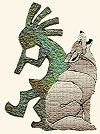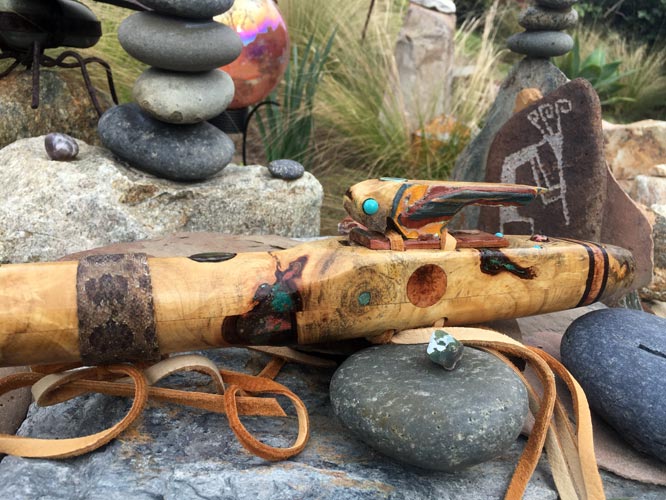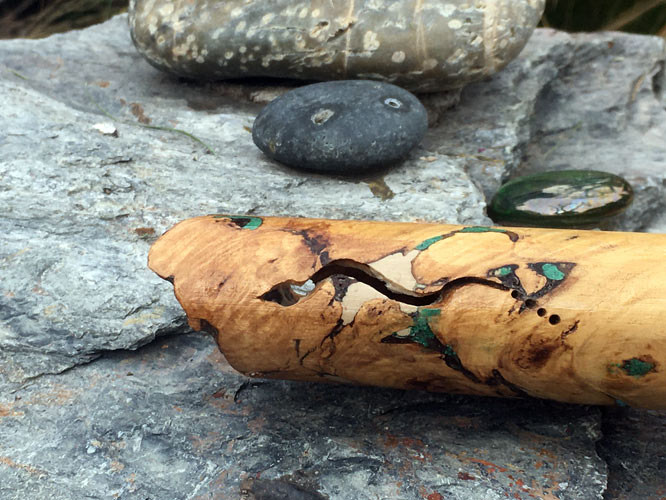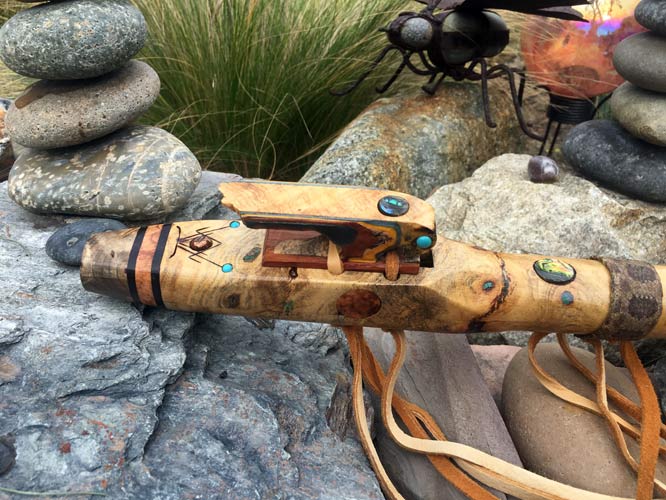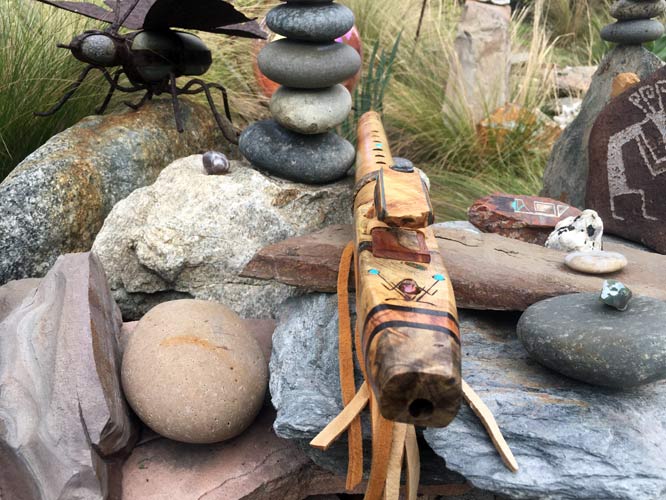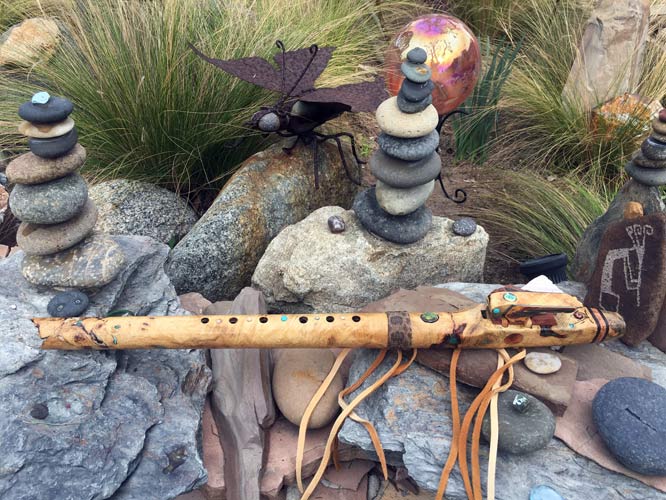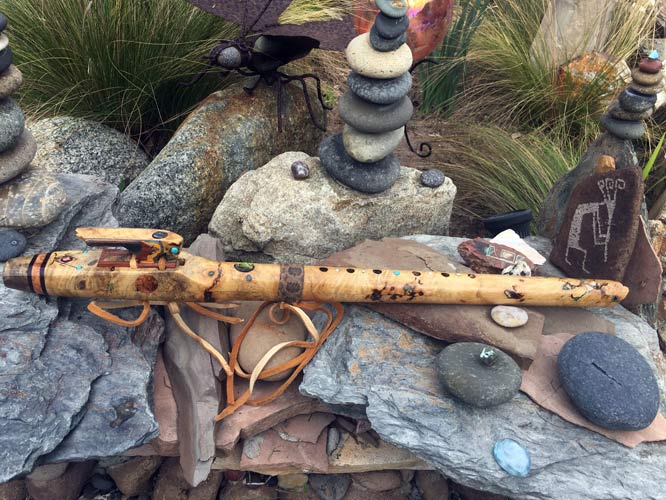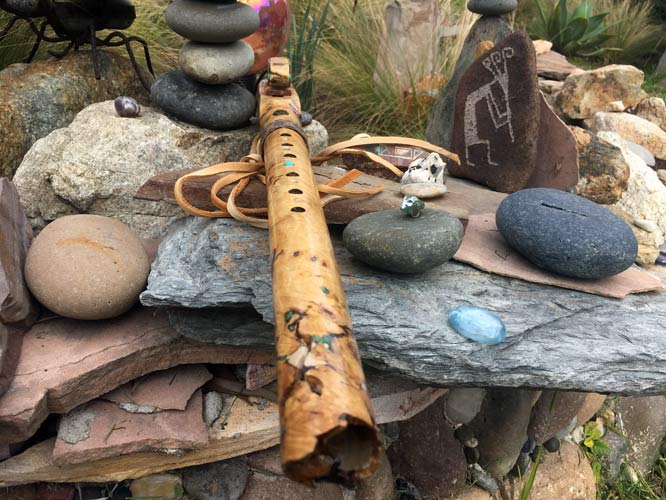$345.00
FREE DOMESTIC SHIPPING
CA Buckeye burl Em…
SOLD
Ok, so basically, this is a root. It has a bore of approx. 1”, and a total live edge length of 23-7/8”. This material never wants to be a flute…Ever. It’s pulpy, and like trying to build a flute from a giant peanut shell. Before beginning, I had to plug 44 holes, or voids, in the wood. Materials included powders of malachite, Battle Mt. NV turquoise, AZ Sleeping Beauty mine turquoise, Mexican limonite, AZ chrysocolla, New Mexico pipestone, Mediterranean red branch coral, lapis lazuli, and lastly, coyote bone…… This instrument took a great deal of time to build and despite my best efforts with this material….. it’s voiced half as well as I had hoped for. That being said, I’m charging half of what I had hoped to ask, based on the time involved.
Woods used, beginning at the mouthpiece include Carolina cherry burl, between layers of African wenge, capped with the buckeye burl. The live edge fetish block is cut from the buckeye burl, and bonded to a base of Oklahoma red cedar for moisture control. Wing overlays consist of colored maple, wherein during the tree’s growth cycles, it was watered with colored water, which when harvested and veneered, displayed the various colors used in the water. Additional layers include abalone and madrone burl. The block is a stylized macaw, an homage to the Zuni symbol for Summer.
Inlay to the flute, again from the mouthpiece, includes a 7x10mm red pearl, flanked by 4.4mm turquoise dots, while the compression chamber is inlaid with 19mm disks of the Carolina cherry burl. Forward from the fetish block is a 13x17mm quartz capped oval abalone cab, while the finger holes were accented with four 4mm abalone dots, and a 6mm turquoise cab. Lastly, the fetish has a 12mm abalone cab set to the crown, and 6.4mm AZ turquoise cabs set as eyes.
The flute was tuned at a wood temp of 73.7 degrees F. Humidity of 63%, and an ambient temp of 71 degrees F.
Mentioning an homage to the Zuni, I was prompted to include abalone and turquoise, as well as a slide off wrap of prairie rattlesnake skin, for the Clan of Chitola-Kwe. Rattlesnake is very powerful medicine for most Indigenous communities. The flute owner is seriously advised to leave the wrap at home, if taking this instrument to any Native American activities……also, due to its fragility, the live edge end was reinforced internally with epoxy, and should probably never be used as a weapon.
SOLD
